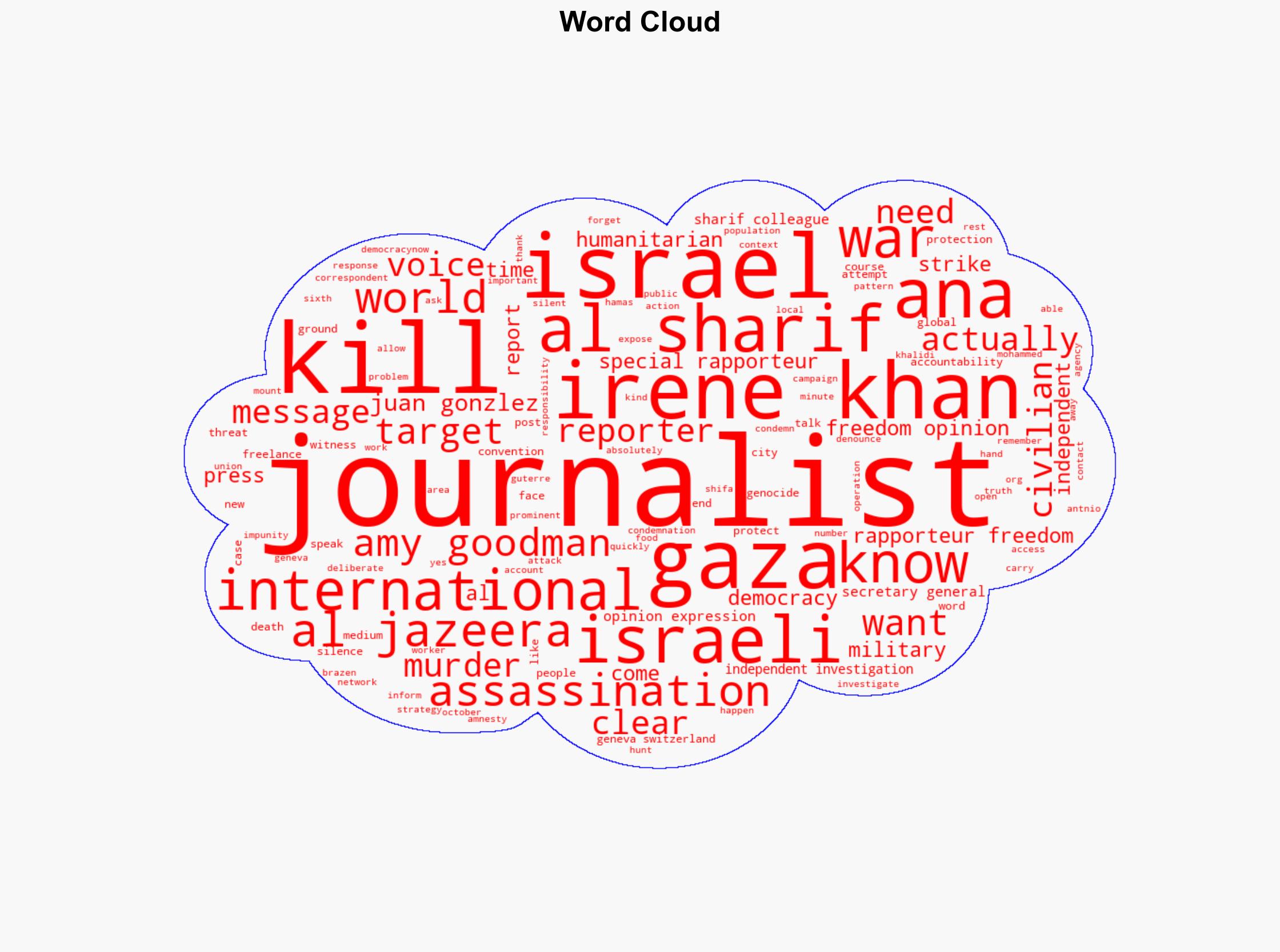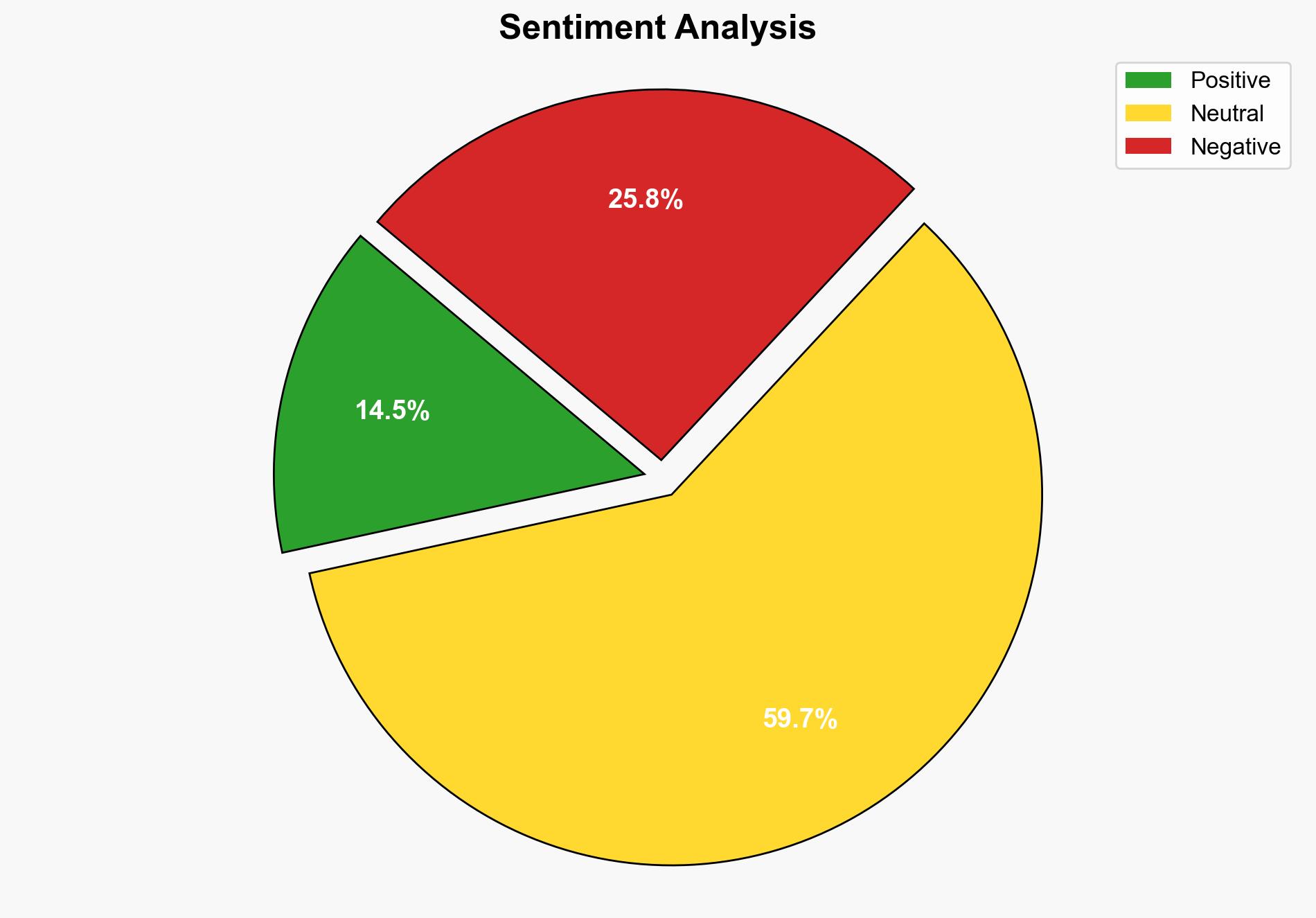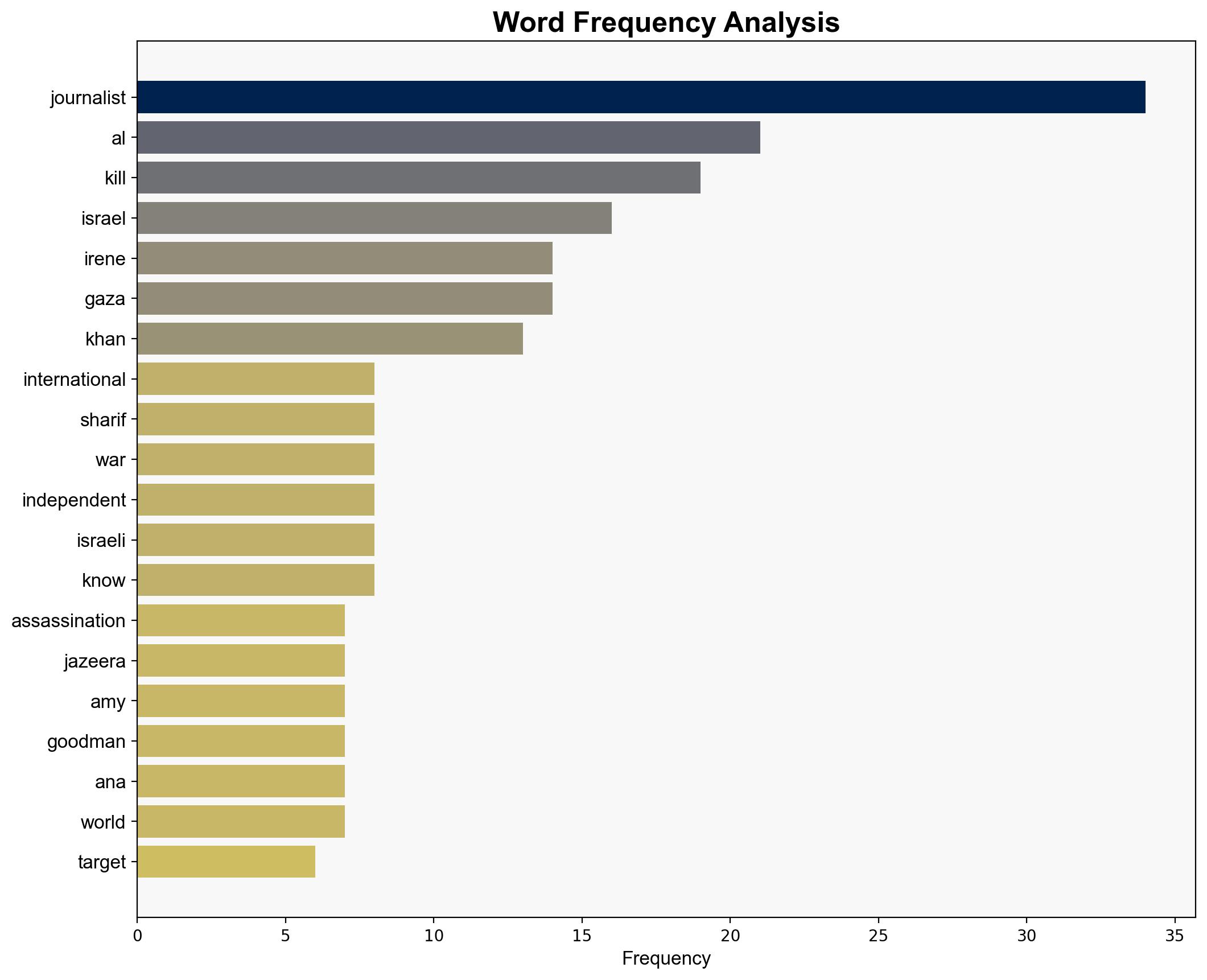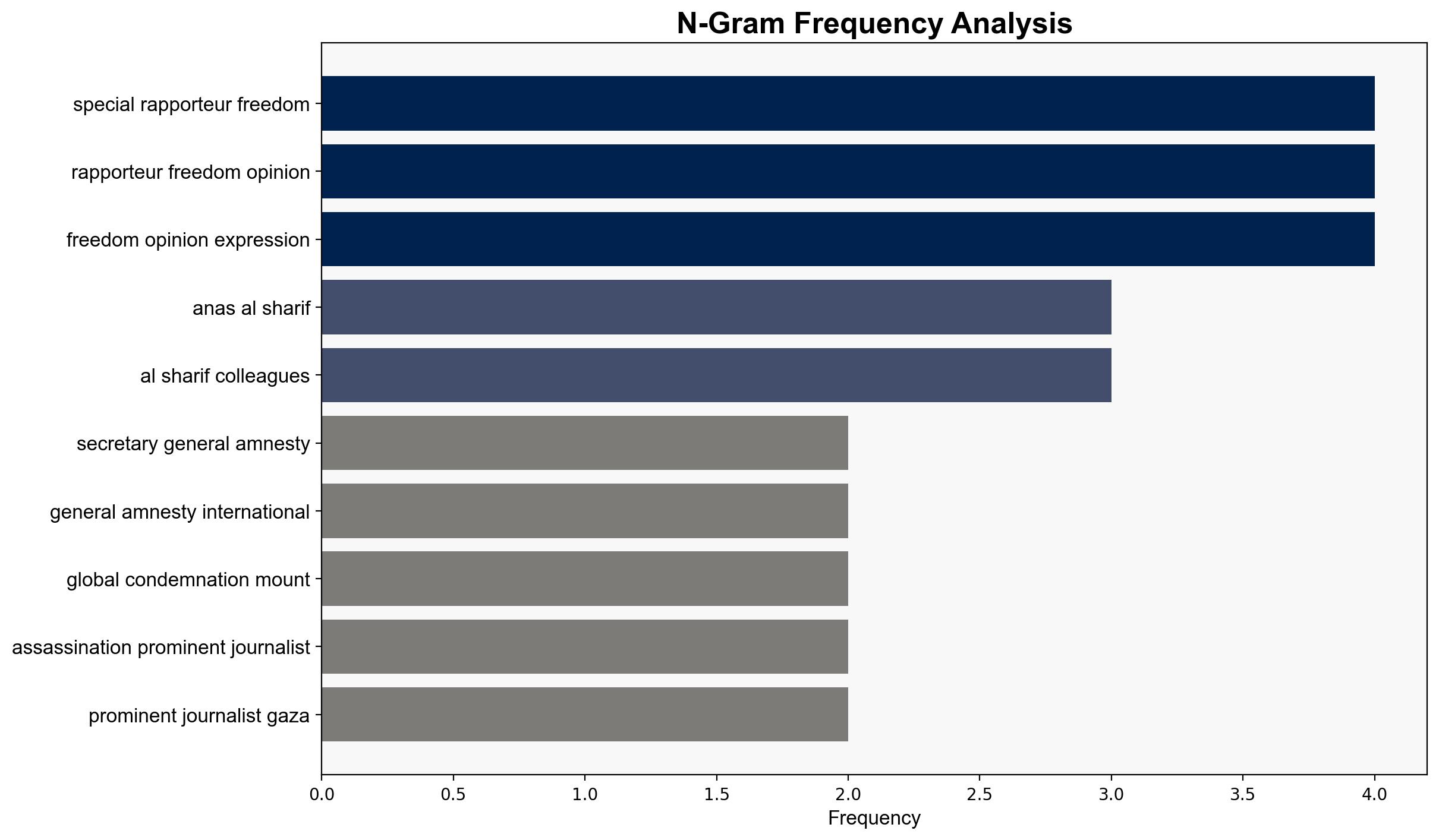Israel Has Deliberate Strategy of Killing Palestinian Journalists Like Anas al-Sharif UN Expert – Democracy Now!
Published on: 2025-08-12
Intelligence Report: Israel Has Deliberate Strategy of Killing Palestinian Journalists Like Anas al-Sharif UN Expert – Democracy Now!
1. BLUF (Bottom Line Up Front)
The most supported hypothesis is that Israel’s military actions in Gaza, resulting in the deaths of journalists, are not part of a deliberate strategy to target journalists but rather collateral damage in a broader military campaign. Confidence in this assessment is moderate due to the complexity of the conflict and the lack of direct evidence supporting a deliberate targeting strategy. Recommended action includes advocating for an independent investigation to clarify the circumstances surrounding these incidents and to prevent future occurrences.
2. Competing Hypotheses
1. **Hypothesis 1**: Israel has a deliberate strategy to target Palestinian journalists like Anas al-Sharif to silence independent voices and control the narrative in Gaza.
– **Supporting Evidence**: Reports from international bodies and journalists suggest a pattern of targeting; statements from Irene Khan and others highlight perceived impunity and deliberate actions.
2. **Hypothesis 2**: The deaths of journalists are collateral damage in the context of broader military operations in Gaza, not a targeted strategy.
– **Supporting Evidence**: The chaotic nature of conflict zones and the presence of journalists in high-risk areas increase the likelihood of unintended casualties; lack of direct evidence of a targeted campaign against journalists.
Using the Analysis of Competing Hypotheses (ACH) 2.0, Hypothesis 2 is better supported due to the absence of concrete evidence directly linking military actions to a deliberate strategy against journalists, despite the presence of circumstantial claims and patterns.
3. Key Assumptions and Red Flags
– **Assumptions**:
– Hypothesis 1 assumes a high level of coordination and intent within Israeli military operations specifically targeting journalists.
– Hypothesis 2 assumes that journalists are not specifically targeted but are victims of broader military actions.
– **Red Flags**:
– Lack of independent verification of claims.
– Potential bias in sources reporting on the incidents.
– High emotional and political charge surrounding the issue, which may influence reporting and perception.
4. Implications and Strategic Risks
– **Implications**: Continued allegations of targeting journalists could damage Israel’s international reputation and lead to increased calls for accountability and sanctions.
– **Strategic Risks**: Escalation of tensions in the region, increased scrutiny from international bodies, and potential retaliatory actions from affected groups.
– **Cascading Threats**: Potential for increased radicalization and recruitment by extremist groups using these incidents as propaganda.
5. Recommendations and Outlook
- Advocate for an independent investigation to establish facts and prevent misinformation.
- Engage in dialogue with international press freedom organizations to address concerns and improve safety measures for journalists in conflict zones.
- Scenario Projections:
- **Best Case**: Independent investigation clears ambiguities, leading to improved safety protocols and reduced tensions.
- **Worst Case**: Escalation of conflict and increased targeting of journalists, leading to international condemnation and potential sanctions.
- **Most Likely**: Continued debate and scrutiny with gradual implementation of safety measures for journalists.
6. Key Individuals and Entities
– Anas al-Sharif
– Mohammed al-Khalidi
– Irene Khan
– António Guterres
7. Thematic Tags
national security threats, media freedom, conflict zones, international relations




